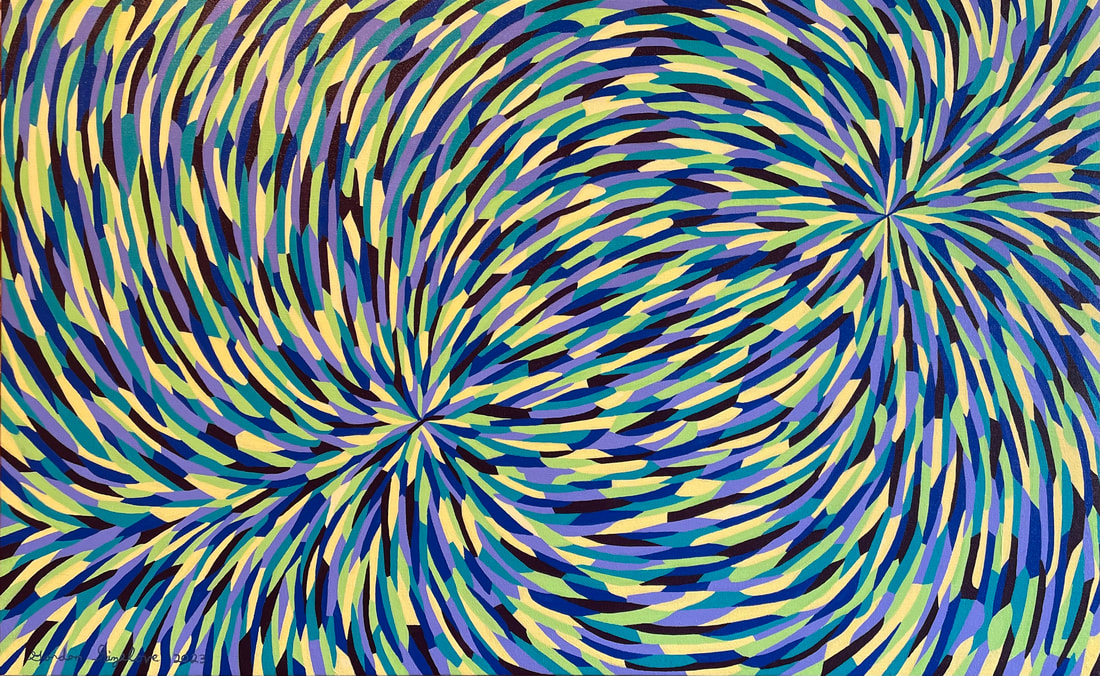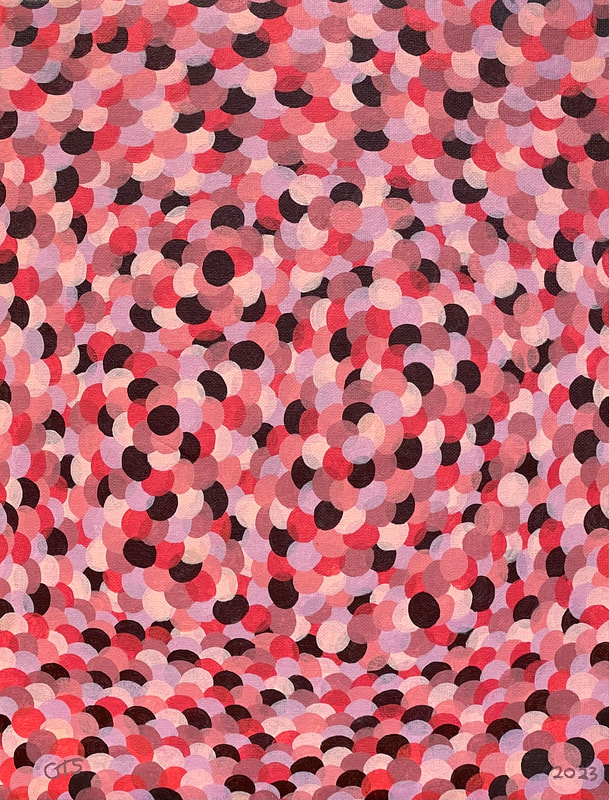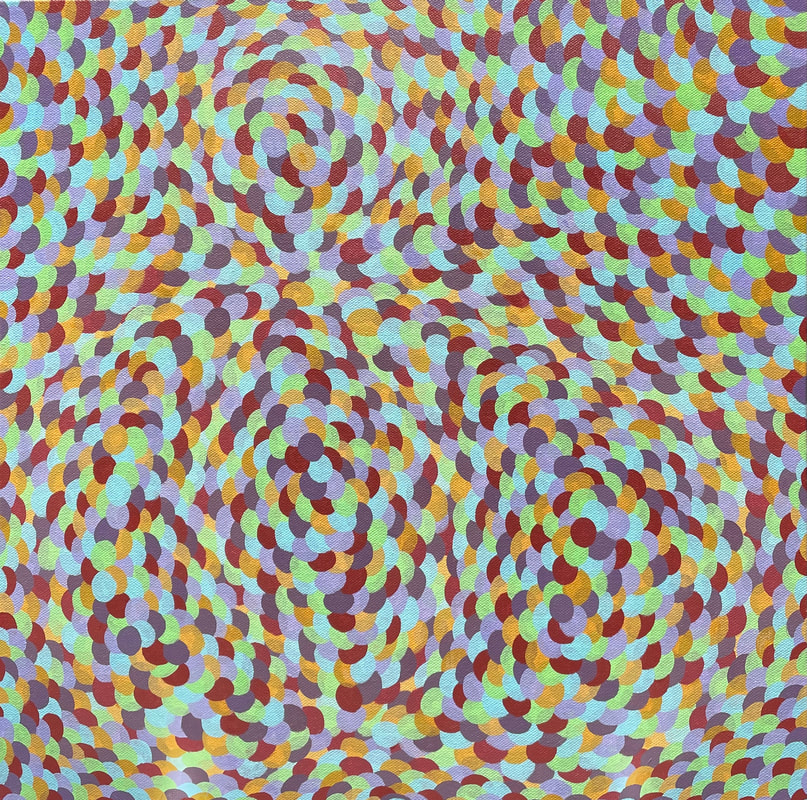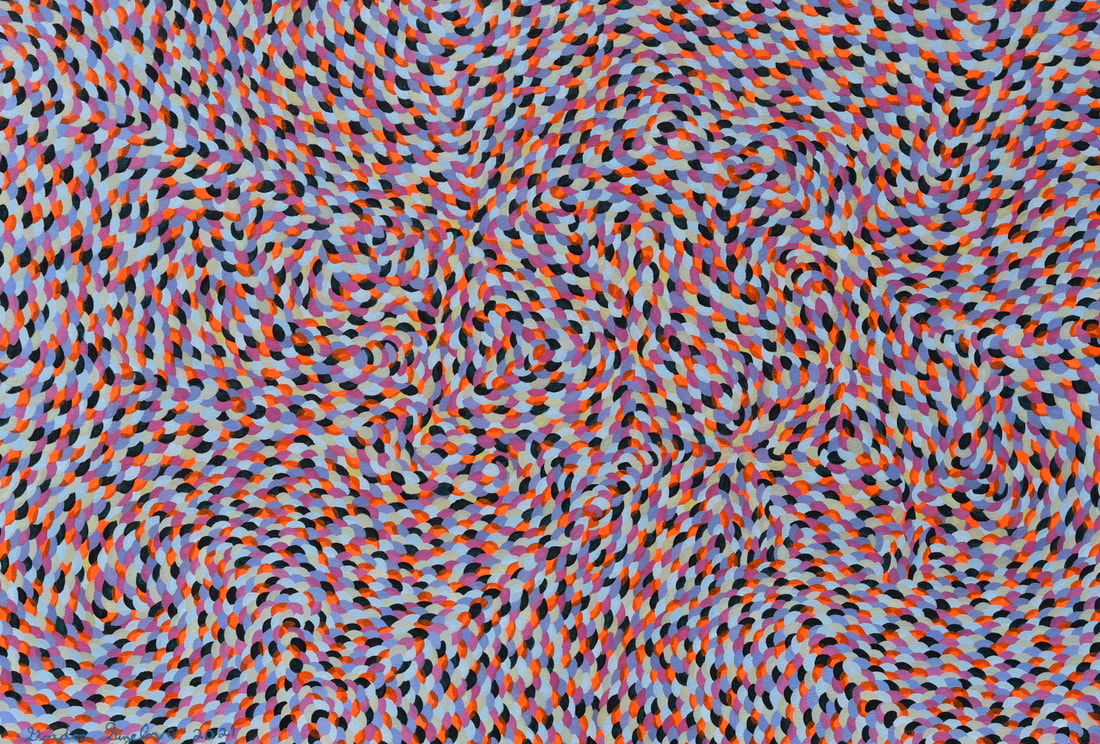My paintings begin with lines . I give these lines visual substance by marking them on either side with points of color. As I work, the lines on my canvases grow into larger forms. They are continuously added to and fill up the canvas.
This technique produces a rich, shallow space. To relate to it, one may think of the space created in the painting as a kind of map. It is laid out in front of a person to examine. The space in the painting becomes a place in itself, where the mind can rest, be stimulated, or dream.
Old Master portraits would freeze a moment in a person's life for eternity. I take a moment of eternity and freeze that moment with the mark I make at that time, creating a painted image on a canvas.
As the modern world's understanding of the universe and the realities contained within it continue to be debated the very nature of truth comes into play. Scientific instruments reveal the workings of quantum mechanics, black holes, and dark matter. What is being revealed is the very nature of our conscious interaction with the material world. What do we see when we look? How do we form our understanding? What is really there?
The best way to view my work is to live with a painting and allow its aura to fill a room. Its presence will change the light in the room and the painting will engage a viewer’s mind, body, and intuitive sense. The more a viewer looks at a painting, the more they notice, until it becomes a memorable part of their experience. My paintings do not rely on language, imagery, or storytelling for their significance. They rely on a conscious interaction with a person. I hope these paintings have universal appeal.
I very much enjoy working with color. I like to experience the interactions of colors and observe the discrepancy between their physical and psychic effects. It seems to me that vision and colors highlight the relativity of our sensory experiences. Light, as it plays upon the eyes, is always changing. It is never fixed and, at times, reveals its fluidity. The light and colors before us can be anything from beautiful to terrifying. The art of color utilizes these qualities in its expression. I bring my enthusiasm to the arts of drawing and painting and I enjoy creating artwork that expresses the vitality that life holds.
In Order Of Appearance From The Top
Pastoral Eyescape, acrylic on canvas, 30" x 40"
Occurence, acrylic on canvas, 24" x 30"
Sunscream, acrylic on canvas, 25" x 40"
The Instant, acrylic on canvas, 25" x 40"
Elsewhere, acrylic on canvas, 12" x 16"
Pose, acrylic on canvas, 18" x 18"
Around Here, acrylic on canvas, 24" x 24"
Night Magic, acrylic on canvas, 24" x 35"
Proudly powered by Weebly







